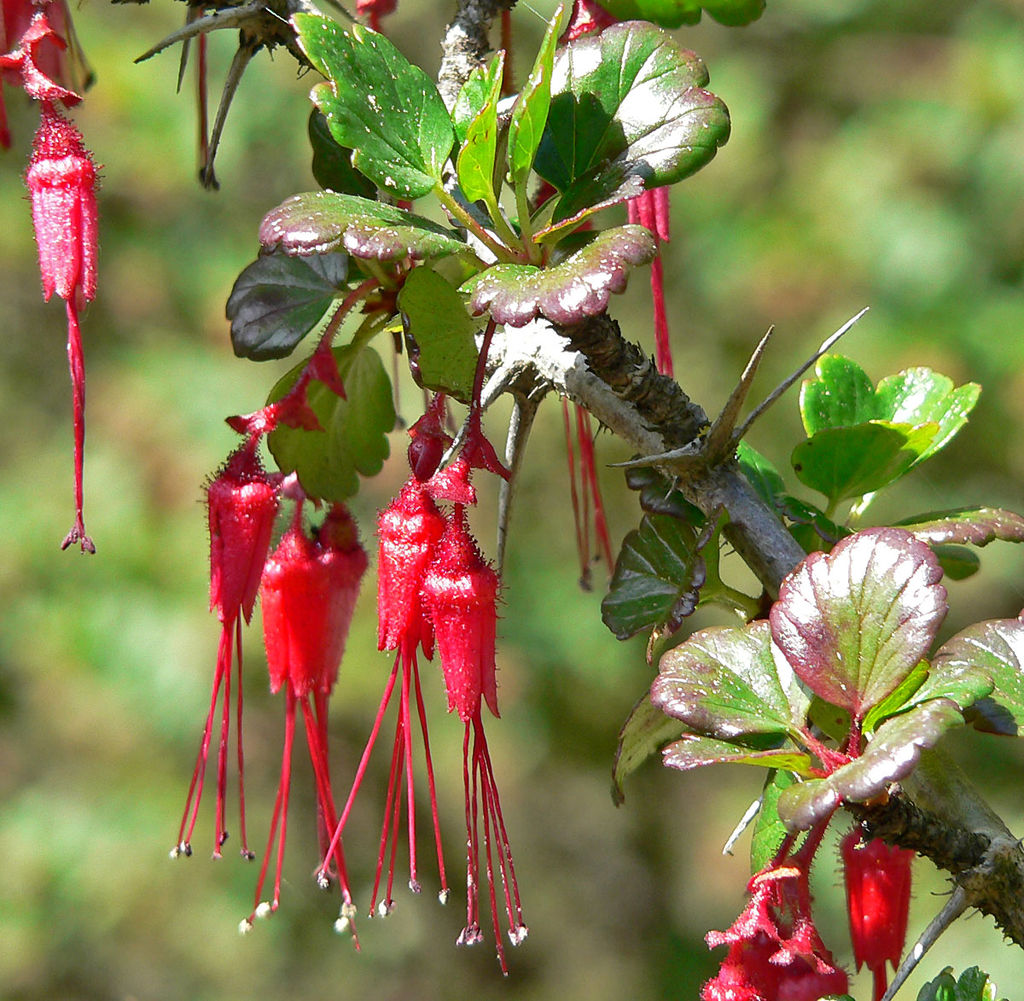
This spiny, summer deciduous shrub is native from central California to Baja California where it grows in the scrub and chaparral of the coastal mountain ranges. It is a member of the currant family, Grossulariaceae, that consists of one genus with about 200 species that are currants or gooseberries, and is not related to true fuchsias. The plant grows up to 10′ tall but more commonly 4′, and has bristle- covered stems with 3 long spines a each node, and rounded, leathery, leaves that are shiny, dark green, and shallowly divided into 3-5 lobes with serrated margins. In winter to early spring (during the rainy season), pendulous tubular red flowers appear along the branches. Each flower is composed of glandular sepals and 4 red petals surrounding long exerted red stamens and stigmas. The flowers are attractive to hummingbirds and give way to red-orange berries that persist into summer. The berries are about .4″ long, densely covered with glandular bristles, and are attractive to birds and small mammals. Fuchsia flowered gooseberry is very drought tolerant and a good choice for dry shade. In order to survive, however, it drops its leaves in summer and is not attractive. It is best covered up by other plants while it is little more than sticks and spines. In addition, it should be planted away from areas where people are likely to come in contact with it because of its bristles and the pain they can inflict. The genus name, Ribes, comes from the Arabic or Persian word ribas meaning acid. The specific epithet, speciosum, is the Latin word meaning beautiful, and is used to indicate that the plant is aesthetically pleasing.
Outstanding Feature: Flowers
Form: Mounding, rounded
Growth Rate: Rapid
Bloom: Pendent red flowers with exerted stamens and stigmas from winter to early spring
Size: 6-10′ H x 3-8′ W
Light: Part to full shade
Soil: Average, dry, well-drained in summer; moist in winter
Hardiness: Zones 7-9
Care: Low maintenance but must plan for unsightliness in summer
Pests and Diseases: Generally healthy but may be damaged by aphids and leaf spot
Propagation: Hardwood cuttings in winter, seed with stratification
Outstanding Selection: ‘Rana Creek’
Photo Credit: Stan Shebs Wikimedia Commons